Unveiling the Best Oxygine Alternatives for Game Development
Oxygine, a completely free and open-source (MIT license) 2D game engine written in C++, has been a go-to for developers seeking a fast, memory-efficient solution for cross-platform game development across MacOSX, iOS, Android, Windows, and Linux. Its ability to build and run C++ applications in web browsers as pure HTML5/JS applications using WebGL, alongside its flexible resource management and easy-to-use API, makes it a powerful tool. However, the diverse landscape of game development often calls for specialized features, different programming languages, or alternative workflows. This article explores top-tier Oxygine alternative options that offer unique advantages for your next game project.
Top Oxygine Alternatives
While Oxygine excels in its niche, several other game engines and libraries provide compelling features, different programming paradigms, and extensive community support that might better suit your specific development needs. Let'p dive into some of the most prominent alternatives.
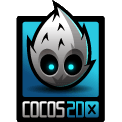
Cocos2d-x
Cocos2d-x is a cross-platform, open-source, and free 2D game engine, making it a strong Oxygine alternative. It's renowned for its speed, stability, and ease of use, perfect for mobile game development. Supporting platforms like Mac, Windows, Linux, Windows Mobile, Android, iPhone, Blackberry, Android Tablet, Windows Phone, iPad, and Blackberry 10, Cocos2d-x offers features like Lightweight and OpenGL rendering, appealing to developers looking for a robust and widely supported engine.

SDL
Simple DirectMedia Layer (SDL) is a cross-platform multimedia library providing low-level access to audio, keyboard, mouse, joystick, 3D hardware via OpenGL, and 2D graphics. As an open-source and free alternative, SDL runs on Mac, Windows, Linux, Windows Mobile, iPhone, S60, BSD, iPad, and Haiku. Its core strength lies in its library functionality, offering drawing 2D capabilities, an extensible window manager, and strong support for gaming, making it a versatile choice for direct hardware interaction.

MonoGame
MonoGame is the spiritual successor to XNA, offering a single framework for creating powerful cross-platform games. It's a free and open-source solution that supports desktop, mobile, and console platforms, including Mac, Windows, Linux, and Web. MonoGame provides both 3D and 2D game engine capabilities, C# scripting, and extensive cross-platform support, making it an excellent choice for developers familiar with C# and looking for a mature, community-driven engine.
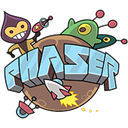
Phaser
Phaser is a fun, free, and fast 2D game framework specifically designed for making HTML5 games for desktop and mobile web browsers. As an open-source solution, it supports Canvas and WebGL rendering and runs on Mac, Windows, and Linux. For developers focused on web-based 2D games, Phaser's dedicated features and active community make it a highly effective Oxygine alternative for pure HTML5 development.
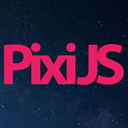
PixiJS
PixiJS is an advanced, mature HTML5 creation engine featuring a fast and flexible 2D WebGL renderer. It's free, open-source, and self-hosted, utilizing JavaScript for development. PixiJS excels in creating interactive, visually compelling content on desktop, focusing on animation capabilities. For those prioritizing high-performance 2D web graphics and animation without the need for a full game engine, PixiJS offers a powerful and efficient alternative.

LibGDX
LibGDX is a Java game development framework that provides a unified API across all supported platforms, including Mac, Windows, Linux, Android, iPhone, Android Tablet, and iPad. This free and open-source framework is known for its cross-platform capabilities and comprehensive gaming features, making it a versatile Oxygine alternative for Java developers seeking broad platform reach and a rich feature set.

SFML
SFML (Simple and Fast Multimedia Library) is a portable and easy-to-use API for multimedia programming. As a free and open-source solution, it's cross-platform, running on Mac, Windows, and Linux. SFML supports multiple languages and provides direct access to OpenGL, making it an excellent C++-based Oxygine alternative for developers who prefer a more modular, library-centric approach to game development, offering direct control over multimedia components.

AppGameKit Classic
AppGameKit Classic is a simple cross-platform game development tool available on Windows, Linux, MacOS, Raspberry Pi, Android, iOS, and HTML. While Freemium, it offers powerful features like 2D and 3D physics, networking and multiplayer support, Python scripting, and visual editing. Its broad platform support and ease of use make it an appealing Oxygine alternative, particularly for those who prefer a more integrated development environment with scripting flexibility.
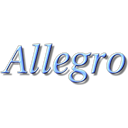
Allegro
Allegro 4 and Allegro 5 are cross-platform, free, and open-source libraries primarily aimed at video game and multimedia programming. They handle common, low-level tasks such as creating windows and managing input, and run on Mac, Windows, Linux, and iPhone. Allegro is a robust library-based Oxygine alternative for C++ developers who prefer building games from the ground up with fine-grained control over core functionalities.
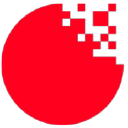
FlatRedBall
FlatRedBall is a free and open-source 2D game engine written entirely in C# and based on MonoGame, with additional features. It supports Mac, Windows, Linux, and Android. For C# developers already considering MonoGame, FlatRedBall offers an enhanced 2D engine experience, serving as a specialized and feature-rich Oxygine alternative tailored for efficient 2D game creation.
The world of 2D game development is rich with powerful engines and libraries. While Oxygine offers an excellent open-source C++ solution, exploring alternatives like Cocos2d-x, SDL, MonoGame, Phaser, PixiJS, LibGDX, SFML, AppGameKit Classic, Allegro, and FlatRedBall can open up new possibilities for your project. Each has its strengths in terms of platform support, programming language, feature set, and community, allowing you to choose the best fit for your unique game development needs and preferences.